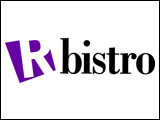Reduced U.S. corn production due to drought combined with increasing demand for corn for ethanol is expected to shift the feed cost advantage for swine production back to western Canada in the coming year.
Drought in the U.S. has reduced U.S. corn production from an average of 147 bushels per acre last year to 123 bushels per acre this year driving up U.S. corn prices.
Mark Ferguson, the manager of industry and policy analysis with the Saskatchewan Pork Development Board, says while most predictions are that western Canada will have an average to above average wheat and barley crop, North American feed ingredient prices are driven by corn so wheat and barley prices are also expected to increase.
In the U.S. the ending stocks of corn are expected to fall from one billion bushels to 650 million bushels.
They’re going to have a significant drop in what feed is available to them.
Of course in the U.S. ethanol production uses 45 percent of the corn crop so that’s a big factor and the supplies of corn are going to be really tight.
In western Canada, with an average to above average crop expected, I don’t think our ending stocks of our commodities will be down drastically unless there’s large imports into the U.S. of these commodities so I think there’s a good chance that we’ll have a reasonable supply to draw on for feed and also we may have a little bit of a competitive advantage because of that for the coming year.
Ferguson notes the western Canadian harvest is just wrapping up so we won’t have a good idea of how much wheat and barley is out there for another couple of weeks to a month.
He observes the farm gate price for barley is now about a dollar a bushel higher than last year, feed wheat is up by a couple of dollars and, because the rise in prices has been so sudden and unexpected, most producers are still feeling out the market, evaluating what types of supply will be available and at what price and looking for bargains where they can find them.



